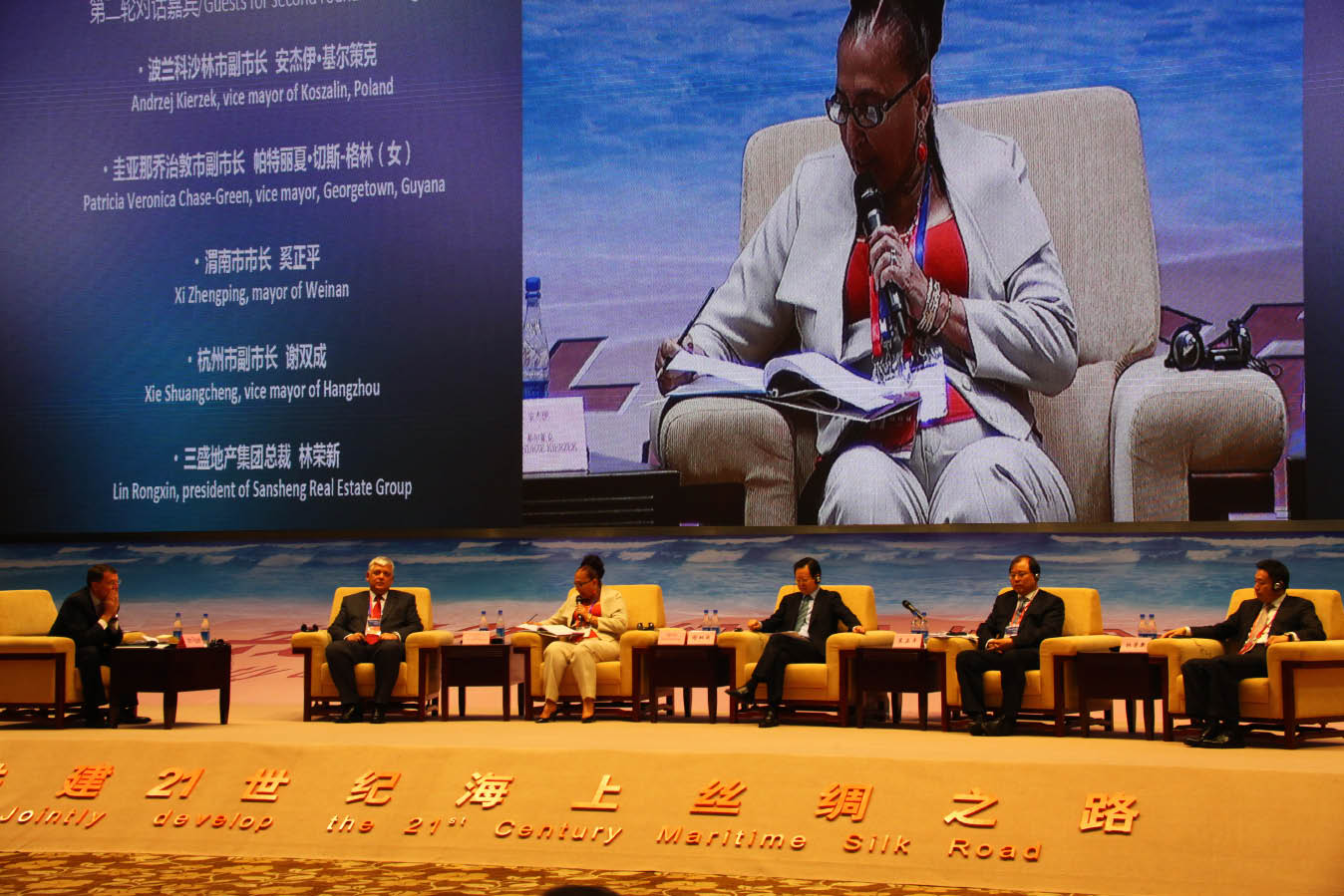Fuzhou Sustains the Glory of the Maritime Silk Road
– An Exclusive Interview with Mayor of Fuzhou Yang Yimin

The 21st Century Maritime Silk Road Mayor Summit Forum was held in Fuzhou on May 18, 2014.
Zhou Zhulong
By staff reporter ZHANG HUA
FUZHOU, a melting pot of seafaring cultures, was an important cradle for the ancient Maritime Silk Road. Now, visitors can still spot dozens of its relics. The long-established Three Lanes and Seven Alleys, with their exquisite ancient buildings, ancient bridges and pagodas, temples and shrines are all witnesses to Fuzhou's respected history as an important trading port.
"Now, the Silk Road Economic Belt and 21st-Century Maritime Silk Road Initiatives are bringing Fuzhou huge development opportunities," said Yang Yimin, mayor of Fuzhou. The municipal government has proposed building the coastal city into a strategic hub that connects the Association of Southeast Asian Nations (ASEAN), Taiwan and the Chinese hinterland.
Origin of the Maritime Silk Road
"The historical evolution of Fuzhou is inseparable from the Maritime Silk Road," Yang said. As early as the Han Dynasty (206 BC-AD 220), Fuzhou built the Dongye Port for maritime trade. The city's maritime trade peaked during the Ming Dynasty (1368-1644). Zheng He's seven voyages to the western seas all started from the Port of Taiping in Fuzhou, which greatly promoted exchanges with Southeast Asia and contributed to Fuzhou's industry and commerce. During the Qing Dynasty (1644-1911), Fuzhou was designated one of the five treaty ports for trade with foreign countries. Seventeen countries established consulates in the city, including the U.S., the U.K. and Spain.
Fuzhou was once a center of silk production, evident today in streets with names like Silk Alley, Brocade Alley and Loom Lane. Fuzhou porcelain was also traded abroad, as well as tea and timber. All these built Fuzhou into one of the most prosperous and cosmopolitan cities in the Asia-Pacific region.
Today, Fuzhou is joining hands with other ports along the ancient Maritime Silk Road, like Quanzhou and Ningbo, to apply for recognition as world cultural heritage sites, and is listed for consideration by the UN.
Fuzhou Advantages
Mayor Yang told China Today that Fuzhou is embracing the national strategy of building the 21st-century Maritime Silk Road. Its advantages are manifest in the following aspects:
Fuzhou is the ancestral land of many overseas Chinese and Taiwanese people, and its proximity confers an advantage in exchanges with Taiwan.
Fuzhou also has remarkable industrial strength, with key industries such as information technology, manufacturing, textiles, food, and metallurgy. It seats 23 national industrial parks.
Bountiful maritime resources are another of Fuzhou's distinctive advantages. It has up to 10,573 square kilometers of sea area and 1,310 kilometers of coastline. In 2013, the total output of its marine economy stood at RMB 218.2 billion.
Fuzhou's advantages in education, science, technology, and talent resources lay a solid foundation for the city's rapid development. With 15 universities and 46 national and provincial scientific research institutions, the city has cultivated 69 academicians in the Chinese Academy of Sciences and Chinese Academy of Engineering.
In addition, the city accumulated valuable experience while opening up. Fuzhou has had economic and trade exchanges with 217 countries and regions. The total number of registered foreign-owned firms there exceeds 4,000 and Taiwanese-funded companies number over 2,000.
Favorable ecological conditions also distinguish Fuzhou from other Chinese cities. In 2013 Fuzhou snatched third place among all provincial capitals in measurements of air quality. Its forest coverage reaches 55.3 percent, the second highest among provincial capitals.
Today, Fuzhou takes the lead in economic cooperation with ASEAN economies. Four Fuzhou-based enterprises have set up breeding facilities in Indonesia and Myanmar. The city is planning to expand its aquaculture in Indonesia and hopes to carry out win-win cooperation with ASEAN in fisheries.
The China-ASEAN Seafood Exchange has been put into operation, completing the seafood supply chains between China and ASEAN members.
